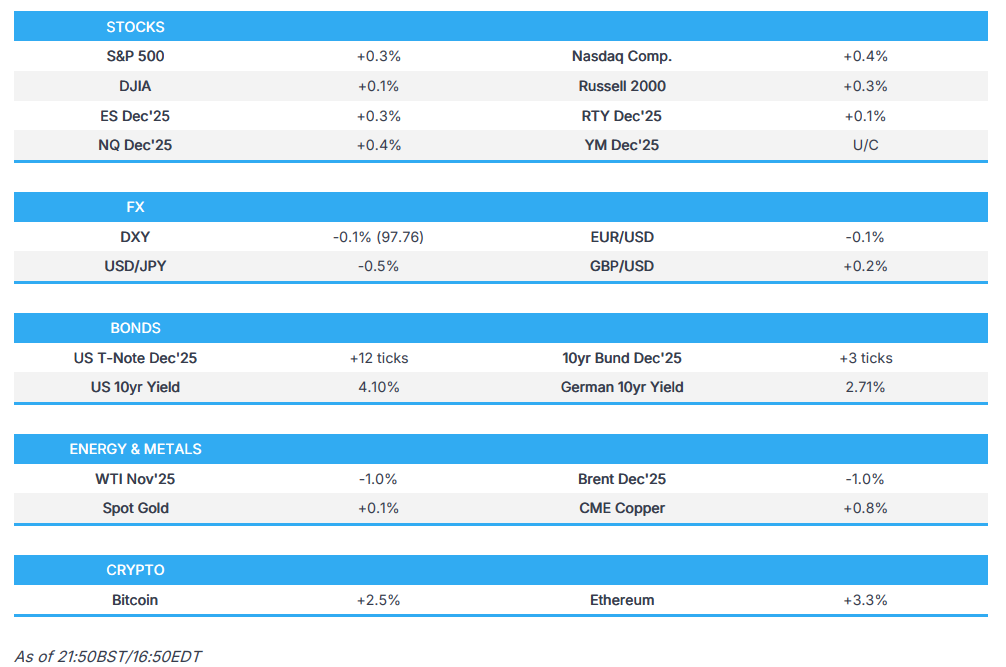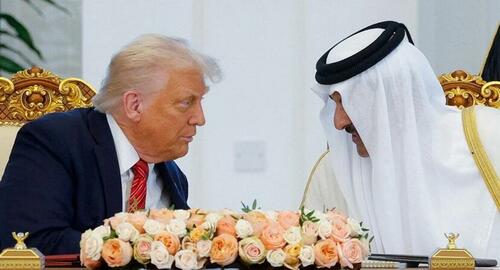The Coup, the Calamity, and the Conspiracy

A website specializing in data visuals offered a helpful graphic on global inflation, 2000-2025, with no other comment about how or why this happened. The results are eye-popping and amazing, and a reminder that hardly anyone has fully come to terms with what transpired over five years.
Most currencies in the world took a 25-35 percent haircut, Far East excepted.

That’s a technical description that obscures what actually happened. The measures by which most people in the world hold the liquid part of their worldly possessions – the money they earned through hard work and saving – was robbed by a quarter and more.
Where did it go? After all, the wealth didn’t sink in the ocean. It was transferred from one group to another. It went from the poor and middle class to the elites in well-connected industries and government. It was simply sucked away from one sector to another, achieving in a matter of a few years what would have been impossible in normal times.
The forced transfer of wealth went from small business to large, from physical enterprise to digital, from store fronts to online, from citizens to government-connected contractors, from workers to leveraged capital, from families to corporations, from savers to a deeply indebted government, and so on.
You are perfectly free to believe that this was all a mistake. Just bad policy. The world panicked because of a pathogen, and central banks ran the printing presses. Out of compassion for our suffering, legislators rained fresh paper on the population which we used to buy hardware and digital gadgetry, while fostering addiction to online entertainment.
Regrettably and mistakenly, governments criminalized small businesses and subsidized large ones. Inadvertently our communities and extended families were divided and then shattered and replaced with the only technology around, Zooming and TikToking while awaiting artificial intelligence to replace the intelligence lost during school and college closures.
Sadly, the shots that everyone thought would save us made us sicker than ever – surely an earnest attempt gone wrong – while a depressed population got hooked on weed and liquor from shops that remained open, and availed themselves to psych drugs newly available through liberalized access via telehealth. The population in the developed world lost three years of lifespan expectation.
You can believe all of this befell people all over the world at the same time via a series of pathetic misjudgments.
Or you could be more realistic and see that this was not a mistake at all. It was entirely intentional, the unfolding of a dark scheme hatched by an indescribably sadistic ruling class. Indeed, if this had all been an accident, we surely would have heard someone apologize by now.
There is also the planning involved. There was Event 201, the lesser-known Crimson Contagion, and many others. They are usually described in the mainstream press as rehearsals for unplanned contingencies, like resiliency training. Absurd. This was plotted far in advance. We have all the receipts. To realize this and connect the dots does not make you a conspiracy theorist. It makes you a person with the capacity to think.
To deny nefarious motives and schemes makes you impossibly naive to the point of sedation. At best, it makes you ill-read in history.
After five years, what can we say was the plan and purpose of this calamity? We all have our views. Certainly within Brownstone ranks, there are many opinions. We argue among ourselves all the time. Coming up with a clean and clear explanation is not easy because there are so many moving parts and so many industrial opportunists who took advantage of the crisis to cash out.
So we all have our own judgments. Mine is as follows. There were three primary motivations and purposes for destroying the world as we knew it: Political, Industrial, and Pharmaceutical.
Political
In the years before the Covid response, the deep state in all nations was being put through a wrenching crisis of public plebiscites that were not going their way. This movement was dubbed and denounced as populist, meaning that actual people were using democratic means to voice their opinions. All this happened between 2010 and 2020 – you can date it decades earlier too – culminating in the lockdowns of 195 countries, which was the turning point as a hammer blow against all these populist movements.
In the UK, the voters had approved Brexit, which was a deep wound on the European Union scheme that dates back decades. The chosen leader in the UK was of course Boris Johnson who later found himself humiliated to have to lead the Covid lockdown campaign. The same was happening in Brazil with the rise and challenge to the establishment by Jair Bolsonaro.
In Italy, there was Matteo Salvini as Deputy Prime Minister and Interior Minister who led an Italy First movement, Marine Le Pen as leader of the National Rally in French politics, Viktor Orbán of Hungary who broke with euro-centralism, Geert Wilders of The Netherlands who headed the Party for Freedom, Rodrigo Duterte of the Philippines with populist appeal, Andrzej Duda of Poland who promoted nationalist policies, and Recep Tayyip Erdoğan of Turkey who was aligned with anti-globalist trends.
You don’t have to regard all these people as “good guys” to recognize how terrifying they are to the neo-liberal consensus, the phrase we use to mean permanent government by the administrative state backed by an entrenched industrial elite in finance, pharma, and elsewhere.
Above all else, there was Donald Trump in the US, who won in 2016 despite every conceivable effort and expectation that he would lose. This was the shock of a century of US history, a sure signal that the system set up since before the Great War to rig American electoral outcomes had broken. What was the fear? It was that he was an outsider who might respond to voter wishes and common sense. That much the establishment could not bear.
So the plot was on. It was the media, the financial establishment, the administrative state, all hands on deck. The election was declared invalid because of Russian interference and years of reporting and investigation commenced, which in the end produced absolutely nothing. It just so happened that the American people elected the man to disrupt a system that had been gamed for the better part of their lives.
With all other options failing, they finally played the pandemic card. The action unfolded from the fall of 2019 (the lab leak) through the spring of 2020, when Trump, surrounded on all sides, and after much resistance, finally greenlighted the lockdowns that wrecked the growing economy he had tried to foster.
The promise was that a shot would arrive in time for the election but the release kept being delayed through the summer and fall during which time he only inhibited the office of presidency, but was otherwise ignored and finally deleted from all social media. Nothing could stop the disaster they tried to prevent: he was reelected.
The rest of the history you know: the Russia scam, the impeachments, the wild media attacks, and the later assassination attempts.
Two fascinating unknowns.
First, recall that Trump fired James Comey, head of the FBI, throwing all of Washington into a panic. The man at the Department of Justice tasked with the job was Rod Rosenstein. He has a sister, Dr. Nancy Messonnier, who worked at the Centers for Disease Control and Prevention. It was Nancy who first briefed the US press (February 25, 2020) about the coming lockdowns, without ever having checked with the White House.
Second, the plan was to replace Trump as president with a new head of state, General Terrence John O’Shaughnessy. A 2020 story in Newsweek, taken down after the second Trump inauguration, explains:
“According to new documents and interviews with military experts, the various plans – codenamed Octagon, Freejack and Zodiac – are the underground laws to ensure government continuity. They are so secret that under these extraordinary plans, ‘devolution’ could circumvent the normal Constitutional provisions for government succession, and military commanders could be placed in control around America….The officer jokes, in the kind of morbid humor characteristic of this slow-moving disaster, that America had better learn who Gen. Terrence J. O’Shaughnessy is. He is the ‘combatant commander’ for the United States and would in theory be in charge if Washington were eviscerated. That is, until a new civilian leader could be installed.”
This is right out of Hollywood: Seven Days in May, the 1964 movie starring Burt Lancaster, Kirk Douglas, Fredric March, and Ava Gardner that detailed an attempted military coup against the president.
Technological
The digital revolution dates from the invention of the web browser in 1995 but didn’t have far-reaching industrial implications for another 10 years, at which point online businesses were competing directly with physical ones. The shift was called the third Industrial Revolution – the second being electricity, internal combustion, and the commercialization of steel from 1870 to 1890 – but it was too slow in coming due to legacy habits and slow adoption.
By legend, every great technological shift in history was accompanied by some measure of violence and perhaps this one would be no different. So mused the gurus in the higher ranks of the techno-utopians.
Meanwhile, the power of the new players in town kept growing: Microsoft, Google, Facebook, Amazon, Apple, Twitter, Tesla, Oracle, Palantir, eventually Nvidia, and so many others, the entire suite of what became the stock market’s highest performers. Their presence in Washington grew too, along with the government contracts, rise of Big Data, global economic dependency, and a new professional class convinced that a leisure life of tapping and remote work was their birthright.
This remarkable shift affected every industry, but dreamers in the space believed that a dramatic upheaval was necessary to convince the world of the need for dramatic shift. The “creative” of Joseph Schumpeter’s story – he was a great scholar who is wrongly interpreted and mischaracterized – was done but the “destruction” part was taking too long.
When the lockdowns came to the US in March 2020, the viral article that first explained the thinking and rationale behind “Fourteen Days to Flatten the Curve” was by Tomás Pueyo, the owner of an online learning platform who otherwise had never written about anything epidemiological. He was clearly tasked with the job and his article had been clearly workshopped, and then amplified by every social media platform.
Now in control of public information flows, the Big Tech platforms, which had grown in influence thanks in part to government contracts, got immediately into the business of piecemeal censorship which only intensified month by month. Amazon was deprecating and taking down books on vaccines and pharmaceuticals while all social media took down accounts, Google gamed search, Facebook smashed dissident accounts and groups, and YouTube deleted millions of videos over time.
Communities shattered, families wrecked, friend networks in upheaval, churches disrupted, the population in large parts of the world in 2024 was barely functioning at a level it had five years earlier. Ill-health, substance abuse, and old-fashioned depression set in against the backdrop of learning loss of two years of closures, masks, and shot mandates in all schools. Trillions were dumped on the population to allow them cash to snap up all the latest digital tools and enjoy the benefits of Zoom weddings, funerals, and church services.
Out of nowhere came the magic cure: the artificial intelligence of large-language models. It was there to upgrade search, make reading essentially unnecessary, replace careful thought, and displace all ways of knowing that humanity had previously. It’s even replacing the confessional and counseling session.
Do you really believe all this was a coincidence? It looks for all the world to be the most far-reaching industrial reset in world history. It worked.
Pharmaceutical
The world’s most powerful industry – history’s richest and most insidiously influential industry – is pharmaceuticals. There are no close competitors, not even the storied munitions manufacturers, shippers, and slave traders of the past. They seem to have everyone on the hook: media, academia, medicine, professional associations, and the population generally.
Before Covid, this was not obvious. Today it should be to anyone paying attention.
Theorists can tell a compelling story about this, how when the search for resources and profits via pillaging was exhausted, the parasites among the state-backed industrial forces turned their attention to the ultimate colonization target: the human body itself.
That might be the big story but the smaller version turns on a technology that showed promise decades ago but never gained approval in normal times: mRNA therapeutics that allow fast potion printing as inoculation of any conceivable pathogen, distributed on a subscription model with digital documentation.
Lacking any means for official approval, the deep embeds in public health turned to emergency use authorization, with the hope of gaining liability protection grandfathered in from the childhood vaccination schedule. The problem of course was that Covid was never a threat to children, but the plotters saw every empirical fact as an obstacle to overcome.
Between whipping up public frenzy about mere exposure, PCR tests with 90 percent false positives, and subsidized sickness and death misclassification, the appearance of a population-wide deadly pandemic was merely a matter of public relations. It also became necessary to pull alternative therapeutics from the shelf, if only to preserve an immunologically naive population for the great inoculation to follow. Audacious doesn’t quite describe the scheme.
It seems incredible for me in particular to type those words. Five years ago, as the organizer of the Great Barrington Declaration, I had no idea of the ferocity of the industry against which we were standing. The lockdowns, the distancing, the masks, the closures, five years ago this week, all to be a giant public-health error, an unscientific lurch into destructive absurdity.
Speaking for myself, it took two years for me fully to realize the role that pharma and modified mRNA played here. The first clue should have been the deprecation of natural immunity, a subject about which humanity has known since the Peloponnesian War. The next clue should have been removal of the shots from J&J and AstraZeneca that used adenovirus-based vector tech, if only to cobble together an mRNA monopoly.
Indeed, there were many clues along the way. I personally received a call from a major player in pandemic planning early on who explained the game plan. It was so absurd that I didn’t believe him and hung up. I should have taken him seriously: after all, he ran pandemic planning under George W. Bush and headed vaccine research for the Gates Foundation.
In the meantime, the evidence of the harm has mounted by the day but so has evidence of the raw power of the mRNA platform. They truly imagine a transhumanist future in which every illness requires a fix that can be monitored using digital technology, a future that guts not only natural biology and free will but also privacy and genuine health. It’s not implausible at all to view this technology as an extension of the eugenics ambition of a century ago.
The Ongoing Crisis
Anyone who imagined that getting one good leader in one country would be the solution to this crisis without precedent is overlooking 1) the Covid response was global not national, and 2) the industries that were driving the agenda are more powerful than any government in the world; indeed all governments in the world.
The recent press conference in which the otherwise resilient and strong Donald Trump was deferring to Pfizer as if it were his boss should have revealed all. RFK, Jr. could only look upon the scene with disdain.
Meanwhile, people in the UK today are being jailed for wrongspeak on Facebook, a new digital ID is coming, and London itself is becoming a carbon-zero 15-minute city. In Brazil, Bolsonaro languishes in prison. The plots and schemes in Europe to keep the populists at bay continue apace. Democracy is still alive in the US; witness the return of Trump. But tech companies are building their technocracy (see the role of Palantir and Starshield) and pharma has survived to experience another chapter of its parasitical profitability.
The battle we kicked off with the Great Barrington Declaration is hardly over. Indeed, it has barely begun. Its conclusion is unknown. But make no mistake: it’s the ideas held in the public mind that drives this narrative of industry, not ultimately industrial profits and not government power. This is the source of our optimism. This can be won but the solution is not as effortless as electing a white knight in one country.
-

Jeffrey Tucker is Founder, Author, and President at Brownstone Institute. He is also Senior Economics Columnist for Epoch Times, author of 10 books, including Life After Lockdown, and many thousands of articles in the scholarly and popular press. He speaks widely on topics of economics, technology, social philosophy, and culture.
Recent Top Stories
Sorry, we couldn't find any posts. Please try a different search.










